Beyond martyrs and victims: Who is worthy of human rights?

Israeli military strikes in the Gaza Strip have killed an estimated 17,000, including more than 6,000 children. One haunting image—among many of the US-backed genocidal war—is of a Palestinian woman, Inas Abu Maamar, 36, embracing the body of her five-year-old niece Saly, killed at Nasser Hospital in Khan Younis on October 17. Squatting on the bare floor, her back to a grey tiled wall, her covered head cast downward, the woman clutches her niece—shrouded in the white kafan (burial cloth)—on her lap. Her right arm tightly cradles the back of the child's wrapped head and her left palm rests on what would be her niece's face, covering it from the photographer's lens. Neither face is visible.
An image, global and hauntingly familiar: woman mourning a dead child. Yet this particular photo—a covered Muslim Palestinian woman mourning a dead Palestinian child—disrupts a narrative with the woman's refusal to allow voyeuristic access to her intimate grief. The Palestinian female body has come to symbolise the project of settler colonial occupation and humanitarian industry to the extent that it serves as a metaphor for women's vulnerability. This photograph stands, in part, as a methodical reproduction of the "worthy victim" reified through iconic mother and child imagery while simultaneously unsettling that framing.
What are the terms through which subjects can become visible as victims of violence and colonial occupation? Both male and female Palestinians are relegated to disposability—their lives stripped of use or meaning to the Israeli state, bolstered by European colonialist legacy and US imperialist support. Violence is the precondition for the existence and survival of the Zionist state. Gender roles undergird the violence. This current war is a racialised and sexualised annihilation of Palestinian personhood. The photograph expresses historical oppression and its subject's refusal "flips the discourse" of victimisation, showing how violence is core—not occasional or exceptional—to the Israeli state's occupation and imperial force as well as Palestinian gendered refusal to allow cooptation by, or give access only to a narrative of suffering to viewing eyes. The image expresses the refusal as a human(e) response so frequently denied colonised bodies.
Mainstream narratives alienate and racialise Palestinians instead of allowing them full humanity: Palestinian men are seen as misogynist brutes, women and children as their victims. In other words, they are victims of exceptional patriarchy, which obscures the reality that patriarchal violence is a global problem and certainly not unique to Palestine; it is obvious that Israeli occupation and US imperialism are also forces of patriarchal violence. It begs the critical question: Who is the human in human rights discourse, and do human beings have to be held up to a moral/ethical test to be worthy of sympathy and be spared genocide?
According to Unicef, via Reuters, an average of 20 children a day have been killed or maimed in wars around the world in the 21st century. In that context, what we see in this image is both heartrending and universal. Indeed, it resonates with the "woman and children" trope that has long served to humanise war's violence, whether in Ukraine, Afghanistan, Sudan, or Palestine. Emotions are fundamental to humanitarian narrative construction, arousing sympathy, guilt, and shame to move people to action. Yet a hierarchy of suffering exists whereby loss of Palestinian lives cannot be mourned because, as Palestinian scholar Devin G Atallah points out, they were never allowed the "livingness while alive."
"Genres of the human," part of decolonial feminist scholar Sylvia Wynter's alternative humanist philosophy, alludes to what decolonial psychiatrist and philosopher Frantz Fanon has termed "sociogenic," or socially-produced categories, modes, or models of humanity that create the conditions of being and nonbeing. Palestinian scholars maintain that Palestinians—like Black people in the US—exist outside the human order of being, which is to say that they agree with and extend to Palestinians the argument made by African American scholars that only all those who do not qualify as "Black"—whether White, racialised, or colonised—exist within the human order. The Zionist and White supremacist projects share this racialised hierarchy of what constitutes the human. The brutal killings by the Israeli state that we are witnessing in Gaza, with no meaningful intervention by the powers that be, is an ongoing manifestation of that selective humanity.
In a recent talk, Palestinian organiser, journalist, and poet Mohammed El-Kurd unpacked the false binaries in entrenched media narratives that continue to shape much of the global discourse around Palestinian rights to self-determination, subjecthood, and resistance. He suggests that since October 7, emphasis on the deaths of women and children, while horrifying and heartbreaking, also flattens the discourse of Palestinian oppression and resistance to that of victim/martyr versus terrorist. El-Kurd posits that this rendering reflects a "historic failure." Not only does it obscure the violation of Palestinian male bodies by Israel's ongoing onslaught in Gaza, in refugee camps, among imprisoned populations, where gendered/sexualised/racialised violence is routinised, but it also restricts expression of a continuum of human feelings to Palestinians, disdain and rage, but also optimism and joy. To be outraged, to express rage at oppression, is a human reaction that is denied Palestinians, who are only relegated to the categories of "animal" or "terrorist" and "inherently violent" and always already suffering. It is an act of erasure where Palestinian violence is emphasised over the ongoing violation of Palestinian humanity.
Speaking to the international outpouring of sympathy following the 2022 killing of Palestinian journalist Shireen Abu Akleh by an Israeli soldier, El-Kurd reminds the viewers that her American citizenship, journalist profession, owning a dog, and Christian identity were all characteristics that made her a "worthy victim" to, in this case, expose Israeli violence. In 2014, Mohammed Abu Khdeir, a 16-year-old Palestinian boy, was burnt to death by Israeli settlers and made the news because of, as El-Kurd points out, his status as a child. These are, he says, the "Western prerequisites for sympathy." Mainstream narratives alienate and racialise Palestinians instead of allowing them full humanity: Palestinian men are seen as misogynist brutes, women and children as their victims. In other words, they are victims of exceptional patriarchy, which obscures the reality that patriarchal violence is a global problem and certainly not unique to Palestine; it is obvious that Israeli occupation and US imperialism are also forces of patriarchal violence. It begs the critical question: Who is the human in human rights discourse, and do human beings have to be held up to a moral/ethical test to be worthy of sympathy and be spared genocide?
We might ask what constitutes violence—material, symbolic, semantic—in this context of occupation and imperialist war. Does the fact that people in Gaza have been enduring a brutal 16-year siege on their daily freedoms count as violence? What are the implications of the siege on the psychological, social, political, economic conditions of life in Gaza? That Gaza is likened to the world's largest open-air prison? This war is an extension of the siege, part of a 75-year-old ongoing project of ethnic cleansing. As El-Kurd asks: "What is it like for Palestinians to live near and smell the sea yet not be allowed to visit it?"
When we raise awareness of gender-based violence, can we also talk about the dual side of colonial violence enacted on Palestinian men and women? About the ways that rendering them as only violent perpetrators or innocent victims aid the US/Israeli hollow "civilising" war discourse and constrict Palestinians from owning a full range of humanity? Can we also grapple with the notion that Palestinians' resistance to oppression is a human reaction that transcends gender? American feminist theorist Cynthia Enloe recently argued, "Feminist lessons of war do not feature goddesses, grievers, or super-heroines. Feminist lessons of war are drawn from paying serious attention to the wartime experiences of diverse…thinking, acting women." One might add, as stated powerfully by the Palestinian Feminist Collective, we also need to pay attention to the ongoing condition of settler colonialism, apartheid, and genocide which are inextricably linked with patriarchy, global White supremacy, and colonialism.
Elora Halim Chowdhury is professor and chair of the Women's, Gender, and Sexuality Studies Department at the University of Massachusetts Boston, US. She is the author of Ethical Encounters: Transnational Feminisms, Human Rights, and War Cinema in Bangladesh (2022).
Views expressed in this article are the author's own.
Follow The Daily Star Opinion on Facebook for the latest opinions, commentaries and analyses by experts and professionals. To contribute your article or letter to The Daily Star Opinion, see our guidelines for submission.

 For all latest news, follow The Daily Star's Google News channel.
For all latest news, follow The Daily Star's Google News channel. 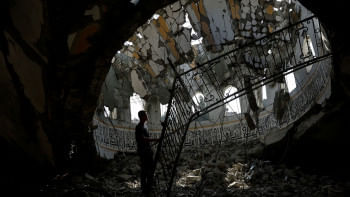
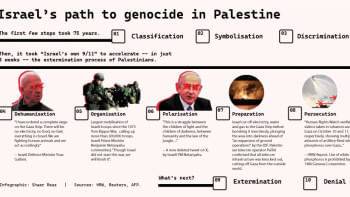
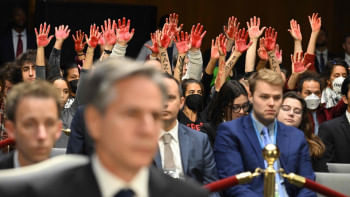


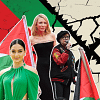
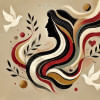
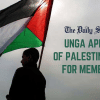


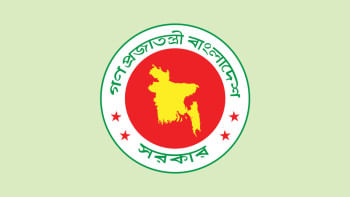
Comments